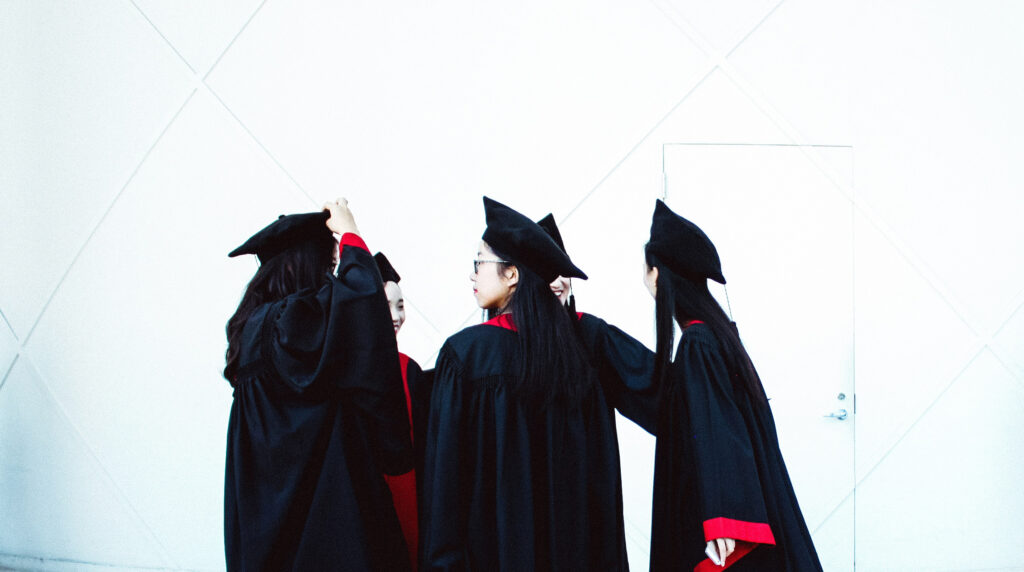When people talk about world-renowned education systems, China probably comes to mind. Whether from TV shows, movies, or news reports about academic rigor, you’ve likely heard something about how education works in China. But do you really know how the Chinese education system functions?
In this post, we’ll explore various aspects of the education system in China and understand its main characteristics.
If this topic interests you, don’t miss our posts on the Canadian education system or the education system in South Korea. But stay here and read this one first 😉
How is the Chinese education system organized?
The education system in China is structured across various levels, from early childhood education to higher education. The first years are compulsory and free. The upper levels are not compulsory but often determine students’ academic and professional futures.
Let’s break it down.
Preschool education
This stage is not compulsory or free in China and covers ages 3 to 6. It focuses on the child’s holistic development, including basic, social, and emotional skills. The government provides financial support to help families afford access to early education.
Primary education
This is the first level of compulsory and free education in China. It covers ages 6 to 12 and lays the foundation for further studies. Subjects include math, English, language, music, art, science, and physical education.
Secondary education
This includes two cycles:
- Lower secondary education (Basic): Compulsory and free, for students aged 12 to 15.
- Upper secondary education (Senior): Students must pass specific exams to access this stage. It is neither compulsory nor free and covers ages 15 to 18. There are two pathways:
- Academic track: Prepares students for university.
- Vocational track: Offers specialized training for entering the workforce.
Higher education
Access to higher education (universities, vocational training centers, etc.) is regulated by one of the most demanding exams in the world: the Gaokao. There are several types of degrees at this stage, making the length of study variable. Higher education is not free.
What about the school year and schedules in China?
The academic year is divided into two semesters. The first runs from September 1st to January and lasts about 20 weeks. The second runs from late February to July and also lasts about 20 weeks.
There are two main holiday periods: winter break (January–February) and summer break (July–August).
As for daily schedules, students often attend school from 7:30 a.m. until around 3:30 p.m. In the afternoons, it’s common to take part in extracurricular or tutoring activities, reinforcing the competitive academic environment.
Key features of the Chinese education system
- National standards, locally adapted
With over 260 million students, a centralized system would be hard to manage. Therefore, the government sets national standards, but each region adapts them locally. Despite the massive scale, over 94% of the population is literate.
- A culture of high expectations and competitiveness
To ensure university readiness, the system is demanding and competitive. Students face many exams throughout their education, especially the Gaokao, which plays a central role in university admissions. This results in intense academic pressure.
Many students attend extracurricular or private tutoring sessions to keep up.
- The importance of the Gaokao
The Gaokao is a key pillar of the Chinese education system. It’s a national standardized university entrance exam held annually, typically in June, and lasts two days. Students prepare intensely because their score determines their access to certain universities and degrees.
- Teaching methods focused on memorization
The Chinese system is traditionally based on rote learning and direct instruction. This contrasts with student-centered, competency-based approaches seen in other countries. However, in recent years, reforms have aimed to introduce more participatory and creative methods focused on critical thinking.
If you’re also looking to make your classroom more engaging, check out Additiopedia—our free teacher resource bank, full of rubrics, didactic units, and quizzes 🤩
Is China’s education system what you expected?
Traditional, demanding, and centered around a national exam for university access—did it match your expectations? Also, tell us: what other countries’ education systems would you like us to cover?
Let us know on our social media channels: Facebook, Twitter, Instagram and Youtube.
And remember: however you assess, Additio App lets you do it easily and intuitively.
See you soon!





